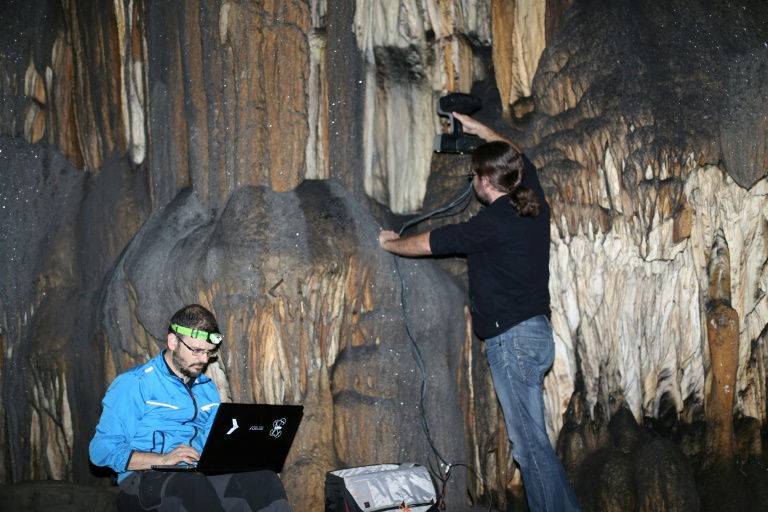The world's oldest known cave art was crafted by Neanderthals more than 20,000 years before modern humans arrived in Europe, showing that our extinct cousins were capable of symbolic thinking just like us, international researchers said Thursday.
The report in the journal Science is based on new technology that reveals the most accurate age yet of ancient cave paintings at three different archeological sites in Spain.
"This is an incredibly exciting discovery which suggests Neanderthals were much more sophisticated than is popularly believed," said co-lead author Chris Standish, an archaeologist at the University of Southampton.
"Our results show that the paintings we dated are, by far, the oldest known cave art in the world."
Since they were created some 64,000 years ago -- at least 20,000 years before modern humans arrived in Europe from Africa -- "they must have been painted by Neanderthals," he added.
Using mainly red pigments and sometimes black, groups of animals, hand stencils, engravings, dots, discs and geometric designs are depicted in the cave paintings at La Pasiega in the northeast, Maltravieso in the west and Ardales in the south of Spain.
These symbolic renderings point to an intelligence that was previously thought to be uniquely the realm of modern humans.
"The emergence of symbolic material culture represents a fundamental threshold in the evolution of humankind," said co-lead author Dirk Hoffmann of the Max Planck Institute for Evolutionary Anthropology.
"It is one of the main pillars of what makes us human."
- New technology -
Plenty of evidence already exists to debunk the myth that Neanderthals were knuckle-dragging brutes, and instead were capable of decorative impulses and rituals, like burying their dead.






